Puppy proofing your home is an important step in preparing for your new puppy.
As a new puppy parent you may not realize just how much your little pup will want to explore their new environment.
What we see as boring ordinary household items (like your computer’s power cord), they see as a chew toy or even a snack.
Preparing your home and yard for your young pup is a lot like preparing for a toddler. You want to eliminate any and all potential dangers.
Before your puppy comes home walk through your house, room by room, keeping an eye out for possible dangers.
Any object that your puppy can get their mouth on is a potential hazard. If it is soft, pliable and within reach it is fair game to your pup.
Here are 10 potential dangers to look out for when puppy proofing your home

1. Garbage
Garbage cans are like treasure chests to young pups just waiting to be discovered. Especially the kitchen garbage can. The smells of discarded rotting food can be very attractive to young pups who don’t understand the dangers that lurk within.
Many human foods are toxic to dogs, discarded cans with sharp edges can cut them and non-digestible items can block their GI track.
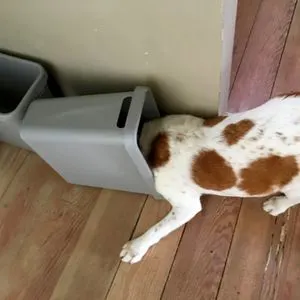
Bathroom trash can be dangerous as well. Discarded tooth paste tubes, razors and female sanitary products all pose risks to your pooch.
Did you know that toothpaste is toxic to dog? Ingested diapers can result in a blockage or expand to the point that it causes internal injuries. Ever seen a baby in a non-swim diaper at the pool?
Hide your garbage cans in cabinets or closets or get securely-locking lids to keep them out. Remember to put safety locks on cabinets and closet doors to ensure your pup can’t find a way in.
Look around your home for any trash or recycling that might be left out such as plastic bags, plastic wrap or aluminum foil.

2. Medications
When puppy proofing your home don’t forget about over-the-counter and prescription medicines. Keep all medicines out of your pup’s reach.
Never leave your medication on a counter, in a low cabinet without safety locks or in your purse that is within reach of your pup.
Those child proof containers might be able to keep your 3 year old safe, but your pup’s sharp teeth will be able to chew threw the safety cap if they are determined.
TIP: Puppy’s will chew on anything. Your hand, a toy, the furniture, pretty much anything they can get their month on. But you can teach your puppy not to. Join us as we explore ways on How to Stop Your Puppy’s Destructive Chewing
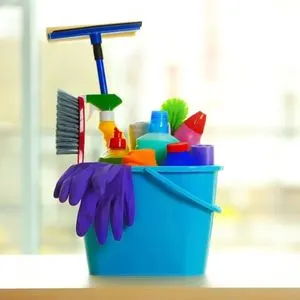
3. Cleaning Supplies
Whether it is your clothes detergent, your dish detergent or general cleaning supplies, most cleaning agents use harsh chemicals that are toxic to animals and people alike.
Make sure to keep those chemicals in a locked enclosed area, away from where your pet spends their time. A high shelf in a locked closet is a good idea.
Also the smells of household cleaning supplies may attract your dog to them. Make sure that your puppy is out of the area when using cleaning supplies, so that he won’t be affected by the vapors given off by the chemicals or be tempted lick the items you just cleaned.
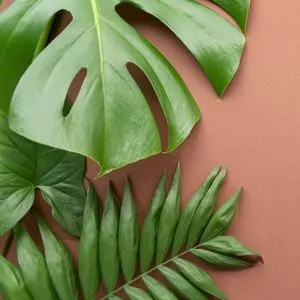
4. Plants
Just like babies, puppies explore the world by putting everything in their mouths. Many of the plants we keep in and around our homes can be poisonous to dogs if ingested.
Eating harmful plants can result in vomiting, diarrhea or even organ failure and death. Research all of the plants you have in and around your home currently and make sure they are not harmful to dogs.
ASPCA Animal Poison Control Center has an extension list of toxic and non-toxic plants.

5. Electrical Cords
You might be amazed at how attracted your puppy can be to an electrical cord. Our Bella loved to chew on any type of pliable rubber including earbuds, electrical cords, and the safety rings off milk jugs.
When your pup chews on electric cords they are at risk of getting a fatal electrical shock. Even if the cords are not plugged in the wires can cause internal injuries if consumed.
Unfortunately, it is hard to get away from using cords in your home these days. But you can keep your wires safe by using a cord protector or concealer. PVC pipes can work too.
Another option is to limit the area your pup can roam to cord free rooms like the kitchen. Don’t forget to keep your place tidy so little objects like your favorite earbuds don’t find their way into your pup’s mouth.
Tip: One way to keep your puppy safe is to crate train them. This does not mean you leave them in the crate all day, but crates are a good place to keep your puppy at night when it is time to sleep or during the day when you are out. Check out Crate Training Made Easy for simple tips how to help your puppy love their crate.

6. Batteries
Just like power cords batteries can be found all over the house and batteries are extremely dangerous if ingested. Cell phones, watches, remote controls, tablets, electronic toys, key fobs, and any other devices that contain batteries should be stowed away out of reach of your pup.
A swallowed battery can cause burns to the soft tissue inside your pet’s esophagus and in their stomach. Disc batteries that are found in watches are especially dangerous because of their size and ease to swallow.
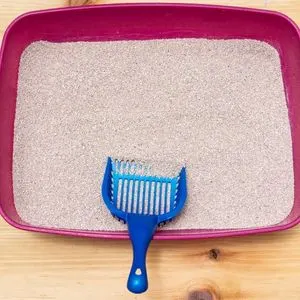
7. Cat Litter Box
For some unknown reason dogs, especially puppies, are attracted to other animal’s feces. Beyond being very disgusting it’s also dangerous when it comes to your cats litter box. Cat litter or waste, if consumed can cause health problems.
Make sure to keep the litter box in an area your pup cannot access. A separate room with a baby gate at the door should work. Just raise the gate up a little to allow your cat to go under it or if you have a small pup show your cat how to jump over the gate.

8. Small Objects
Small objects are the toughest category of all the hazards to manage when puppy proofing your home. Puppies who are exploring their surroundings will discover all sorts of temptations in your home. Everything from jewelry, coins, rubber bands, paper clips, staples, to some larger items like shoes and clothing.
These items may be fun to your pup to play with and shred, but they can be fatal if swallowed. Dogs will often hide from you while chewing on found objects so it is important to put up temporary blockades to keep your pup from sneaking behind the furniture or under the bed to chew on a forbidden object.
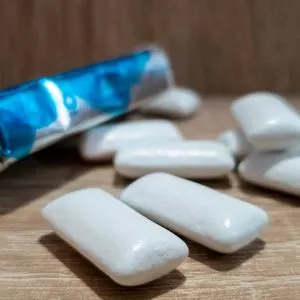
9. Xylitol
Xylitol poisoning is becoming increasing common as it is used in more products, sugar-free foods like ketchup, peanut butter, protein bars, pudding, and sugar-free gum may contain xylitol as one of their primary ingredients.
Even hand creams and deodorants can contain Xylitol. Ingesting Xylitol can be fatal to your pup.
You can find a list of 700+ products containing xylitol at https://www.preventivevet.com/xylitol-products-toxic-for-dogs
10. Toilet
Keep the toilet lid down at all times or keep the bathroom door closed. A curious dog could fall in and drown.
Outside Dangers
While these ten dangers are generally located inside your home, puppy proofing the outside of your home is also a concern.

Your Garage
There are so many hazards that are stored in garages and sheds that it is just better to keep your pup out of these areas. Items like Antifreeze are incredibly dangerous to pets. Just a small amount can be fatal and because of the sweet smell, dogs are very attracted to it. Antifreeze can not only be found on garage shelves but can also be on the garage floor due to leaks.
Mouse/rat poison, pesticides, fuel and oil for gas power lawn equipment, mothballs and cleaning supplies are also commonly found in the garage. All are equally dangerous.
There are still other hazards like heavy tools or small nails and screws that pose a threat to your pup. Not to mention the risk of getting run over or crushed by an automatic garage door.
Your Yard
The great outdoors…., seems like a natural place for a pup to be but there are hidden dangers here too. It’s important to always supervise your pup when outside especially if you live in an area with abundant wildlife.
Each time you go out into the yard inspect your fence for weak spots. You’d be surprised how little space and time a pup needs to crawl under. If you have a pool make sure the pup cannot access it. Drowning is a possibility, even if your puppy can swim.
Keep your dog away from the yard if it has recently been treated with fertilizers, pesticides, or insecticides. Try to avoid using insecticides because the chemicals can be very harmful to your puppy.
This is in no way an exhausted list of the possible hazards in and around your home. To ensure the safety of your pet you must be vigilant.
The Puppy Blues – Dealing with a new puppy is hard, especially if you are a first time puppy parent. You may even feel like you made a mistake by getting a puppy. I mean puppies generally come untrained, can’t understand you and don’t know the rules of the house. But it does get better. It’s important to understand that you are not alone. Check out my post on Puppy Blues: Dealing with Regret to see how I managed my own puppy blues.
For more tips on puppy training check out my other posts:

Syd
Saturday 1st of August 2020
Warning to all ! Earbuds!! My little jackoweenie, whom is very well behaved, found one item to obsess over...my Earbuds! I was very good at keeping the Earbuds away from her, until I slipped up today . Five minutes and she had eaten both Earbuds. I gave her a hydrogen peroxide treatment and fortunately, she threw up both Earbuds. Found out she had swallowed both Earbuds whole . Would have likely caused a blockage because she is so small.